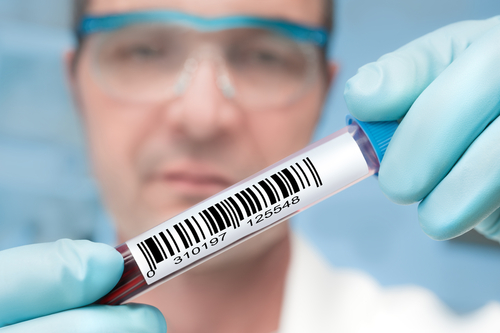#AANAM — Quanterix Leads Research on Neurofilament Light Chain as Potential MS Biomarker

Quanterix is leading the research presented at this year’s American Academy of Neurology (AAN) Annual Meeting, validating the use of neurofilament light chain (NfL) as a potential biomarker for the diagnosis, prognosis, and treatment monitoring of patients with multiple sclerosis (MS) and other neurodegenerative diseases.
The company is featuring the use of Simoa Technology, an ultra-sensitive technology for biomarker detection, in 36 studies, of which many focus on measuring the levels of NfL in the serum of MS patients to detect and monitor disease.
According to Quanterix, there are four times more studies on NfL this year than there were at last year’s meeting, stressing the marker’s potential value as a key indicator of neurodegenerative disease onset and progression.
“As the use cases for NfL grow, evidenced by the growing body of research presented at AAN, we believe that this biomarker is truly one of the most promising biomarkers for brain health with the power to completely transform the way diseases like Alzheimer’s, multiple sclerosis, Parkinson’s, and even brain injuries are diagnosed and treated,” Kevin Hrusovsky, Quanterix’s chairman and CEO, said in a press release.
Quanterix is sponsoring more than 85% of the studies featuring NfL at the AAN meeting, taking place through May 10 in Philadelphia.
These studies address the value of blood NfL levels as a reliable way to diagnose and monitor a range of neurodegenerative diseases, including Alzheimer’s disease, amyotrophic lateral sclerosis (ALS), spinal muscular atrophy (SMA), Huntington’s disease, and MS.
Neurofilaments are nerve cell-specific components that can be measured in different body compartments, including the blood. NfL appears to be a promising biomarker for MS patients; it is almost exclusively present in nerve cells, and is a sign of neuron degeneration/damage.
Some of the studies featured at the AAN meeting assess how measuring NfL in the blood (serum) compares with the standard, and more invasive, sampling in cerebral spinal fluid (CSF). Others look at the benefit of using this blood marker for monitoring treatment responses in clinical trials, and evaluating new therapies for neurodegenerative diseases.
A sign of the growing popularity of NfL is the fact that the biomarker is currently included in 46 active clinical trials in the U.S. alone.
“NfL has the ability to create new testing modalities for detection and treatment across numerous degenerative disease states, including some of the most difficult-to-detect conditions. Our Simoa technology helped researchers measure NfL accurately in blood for the first time, and it’s incredibly rewarding to see the continued impact of our technology on these and many other studies,” Hrusovsky said.
Quanterix plans to advance the field by employing the Simoa platform, which is on average 1,000 times more sensitive than traditional immunoassays, according to the company, which may offer researchers an unprecedented ability to detect neurological disorders.
Studies suggest that using Simoa to identify biomarkers has the potential to detect disease progression earlier than imaging or CSF analysis, and with that, improve treatment monitoring.
To find out more about Quanterix studies featured at this year’s AAN annual meeting, visit the company’s website.






